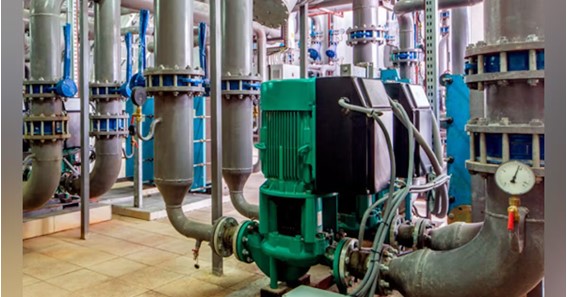Flow measurement is a critical aspect of many industries, and the accuracy and reliability of these measurements can greatly impact operational efficiency and cost-effectiveness. In recent years, ultrasonic flow meters have emerged as a revolutionary technology, offering numerous advantages over traditional flow measurement methods. In this article, we will explore how ultrasonic flow meters have revolutionized flow measurement, providing efficiency at your fingertips.
Understanding Ultrasonic Flow Meters:
Ultrasonic flow meters utilize the principle of sound waves to measure the flow rate of liquids and gases. They employ ultrasonic transducers that emit high-frequency sound waves into the flowing medium. By measuring the time it takes for the sound waves to travel between transducers, the flow velocity can be accurately determined.
Click Here- How to Scent a Room with Essential Oils
Advantages of Ultrasonic Flow Meters:
Ultrasonic flow meters offer several key advantages that have contributed to their widespread adoption:
- Non-Intrusive: Unlike traditional flow meters that require direct contact with the fluid or insertion into the flow path, ultrasonic flow meters are non-intrusive. They do not obstruct the flow or cause pressure drops, reducing the risk of system disruptions and minimizing maintenance requirements.
- Wide Range of Applications: Ultrasonic flow meters are versatile and can be used in a wide range of applications, including water treatment plants, oil refineries, chemical processing, HVAC systems, and more. They can handle various fluid types, including liquids, gases, and even slurries.
- High Accuracy and Reliability: Ultrasonic flow meters provide high accuracy and reliability in flow measurement. With advancements in technology, modern ultrasonic flow meters can achieve accuracy levels of up to ±0.5% or better, ensuring precise measurements for critical processes.
- Bi-Directional Flow Measurement: Many ultrasonic flow meters have the ability to measure both forward and reverse flow, making them suitable for applications where flow direction changes or needs to be monitored.
- Low Maintenance Requirements: Ultrasonic flow meters are known for their low maintenance requirements. They have no moving parts that can wear out or become clogged, reducing the need for regular servicing and minimizing downtime.
- Wide Turndown Ratio: Ultrasonic flow meters have a wide turndown ratio, allowing them to accurately measure a broad range of flow rates. This flexibility makes them suitable for applications with fluctuating or variable flow conditions.
Types of Ultrasonic Flow Meters:
There are two primary types of ultrasonic flow meters:
- Transit-Time Ultrasonic Flow Meters: This type measures the difference in time it takes for sound waves to travel upstream and downstream. It is well-suited for clean liquids and gases.
- Doppler Ultrasonic Flow Meters: Doppler flow meters rely on the principle of frequency shift caused by moving particles or bubbles in the flow. They are effective for liquids or slurries with suspended particles or bubbles.
Applications of Ultrasonic Flow Meters:
Ultrasonic flow meters find widespread use in various industries, including:
- Water and Wastewater Management: Ultrasonic flow meters play a crucial role in monitoring water consumption, optimizing distribution networks, and ensuring efficient wastewater treatment processes.
- Oil and Gas Industry: They are utilized for measuring flow rates in pipelines, refineries, offshore platforms, and other oil and gas operations, enabling accurate process control and inventory management.
- Chemical Processing: Ultrasonic flow meters provide precise flow measurements in chemical processing plants, facilitating accurate dosing, blending, and monitoring of chemical reactions.
- HVAC Systems: They are employed in heating, ventilation, and air conditioning systems to monitor the flow of chilled water, hot water, and refrigerants, ensuring optimal energy efficiency.
Choosing the Right Ultrasonic Flow Meter:
Selecting the appropriate ultrasonic flow meter depends on several factors, including the application requirements, pipe size, fluid characteristics, and environmental conditions. It is important to consider factors such as accuracy, turndown ratio, installation requirements, and compatibility with existing systems.
In conclusion, ultrasonic flow meters have revolutionized flow measurement with their non-intrusive nature, versatility, high accuracy, and low maintenance requirements. By harnessing the power of sound waves, these advanced devices provide efficient and reliable flow measurement solutions across a wide range of industries and applications. With ultrasonic flow meters, businesses can optimize their processes, improve operational efficiency, and achieve cost savings, all while ensuring accurate and dependable flow measurements at their fingertips. You can find out more information here at our website.






